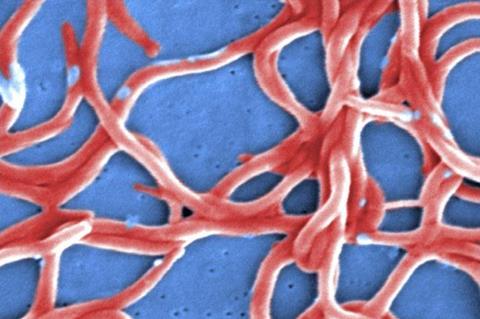Scientists at Tufts University School of Medicine have developed a genome-scale metabolic model or “subway map” of key metabolic activities of the bacterium that causes Lyme disease.

Using this map, they have successfully identified two compounds that selectively target routes only used by Lyme disease to infect a host. Their research was published in the journal mSystems.
While neither medication is a viable treatment for Lyme because they have numerous side effects, the successful use of the computational ’subway map’ to predict drug targets and possible existing treatments demonstrates that it may be possible to develop micro-substances that only block Lyme disease while leaving other helpful bacteria untouched.
Big data
Genome-scale metabolic models (GEMs) collect all known metabolic information on a biological system, including the genes, enzymes, metabolites, and other information. These models use big data and machine learning to help scientists understand molecular mechanisms, make predictions, and identify new processes that might be previously unknown and even counter-intuitive to known biological processes.
Currently, Lyme disease is treated with broad-spectrum antibiotics that kill the Lyme bacterium Borrelia burgdorferi, but simultaneously also kill a wide range of the other bacteria that inhabit a host’s microbiome and perform many helpful functions.
Some people with chronic Lyme symptoms or recurring Lyme disease take antibiotics for years, although it is against medical guidelines and there is no proof that it works.
Targeting pathways
“Most of the antibiotics we still use are based on discoveries that are decades old, and antibiotic resistance is an increasing problem across many bacterial diseases,” says Peter Gwynne, first author on the paper and research assistant professor of molecular biology and microbiology at Tufts University School of Medicine and the Tufts Lyme Disease Initiative.
“There is a growing movement to find micro-substances that target a specific pathway in a single bacterium, rather than treating patients with broad spectrum antibiotics that wipe out the microbiome and cause antibiotic resistance.”
The two compounds identified using the ’subway map’ computational model are an anticancer drug with significant side effects that make it impractical to use in treating Lyme, and an asthma medication taken off the market because of its side effects. Both drugs identified by the model were tested in the lab and found to successfully kill Lyme bacteria - and only Lyme - in culture.
Narrow spectrum test
“The Lyme bacterium is a great test case for narrow spectrum drugs because it is so limited in what it can do and so highly dependent upon its environment. This leaves it vulnerable in ways other bacteria are not,” says Linden Hu, the Paul and Elaine Chervinsky Professor of Immunology, a professor of molecular biology and microbiology, and senior author on the study.
Use of the computational model - which Gwynne and collaborators developed during COVID when they couldn’t work onsite in the lab - has the potential to enable scientists to skip some painstaking basic science steps and lead to swifter testing and development of more targeted treatments.
“We can now use this model to screen for similar compounds that don’t have the same toxicity of the anticancer and asthma medications but could potentially stop the same or another part of the Lyme disease process,” says Gwynne, a recent recipient of the Emerging Leader Award from the Bay Area Lyme Foundation.
Chronic symptoms
Gwynne and Hu are conducting other research to determine whether people with chronic Lyme symptoms are still infected or are suffering from an immune malfunction that creates chronic symptoms.
“I can imagine a day when people take a targeted Lyme treatment for two weeks rather than a broad-spectrum antibiotic, are tested and determined to be clear of the infection, and then take drugs to tame their immune response if chronic symptoms persist,” says Gwynne.
Gwynne says similar computational ‘subway maps’ can be developed for other bacteria with relatively small genomes, such as those that cause the sexually transmitted diseases Syphilis and Chlamydia, and Rickettsia, which causes Rocky Mountain Spotted Fever. Gwynne’s team is looking at developing maps for some of these bacteria.







No comments yet